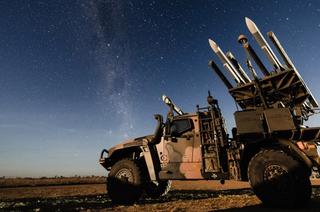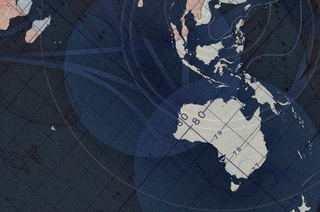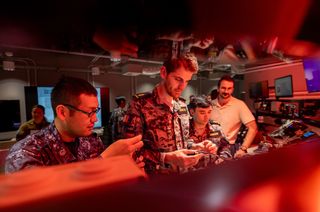Much of the world is holding its breath waiting to see what retaliation Iran might take after the US military blasted its nuclear facilities with bunker-busting bombs and cruise missiles. Iran has unsuccessfully launched missiles at US bases and there may be terrorist or cyber attacks of the kind Tehran has unleashed in the past. However, a larger regional war seems unlikely. Iran’s air defences have been degraded by Israel to the point that the US raid came under zero enemy fire. Nor can Iran count on its proxies Hamas in Gaza or Hezbollah in Lebanon, since both have also been decimated by Israeli attacks. Iran could try to close the Straits of Hormuz, but that would do severe economic damage to Iranian exports at a time when the country is in economic distress. And even if it does escalate, Iran can count on little more than rhetorical support from its erstwhile supporters in Moscow and Beijing.
In the meantime, the world is drawing some new lessons about Donald Trump.
First, President Trump’s decision to use force has defined his second term as far more hawkish than anticipated. The Make America Great Again (MAGA) coalition behind Trump has different factions. The most influential would be those represented by White House Deputy chief of staff Steven Miller, who are strongly anti-immigration and committed to an ideological war against “woke” liberal ideologies. On foreign policy, there is a split between hawkish pro-Israel conservatives represented by Secretary of State Marco Rubio or Sen. Lindsey Graham versus anti-interventionist figures such as Director of National Intelligence Tulsi Gabbard or commentator Tucker Carlson. In the middle are figures like Vice President JD Vance and Undersecretary of Defense Elbridge Colby, who oppose intervention in the Middle East or Europe but support a hard line on China. Each group thought it spoke for Trump, but with this attack, the president has come close to repudiating the anti-interventionist wing. He has openly criticised Carlson and is reportedly furious at Gabbard, considering firing her for signalling opposition to his position on Iran. World leaders will note that this is not an isolationist administration.
Second, the US military has once again demonstrated its prowess. The integrated use of air and naval power to deceive Iran’s remaining air defences and then deliver pinpoint hits with a Massive Ordnance Penetrator — all on the far side of the world — is something that China or Russia could not replicate. That does not mean the same stratagem would work against heavily defended North Korea or China, but the demonstration of competence will rattle adversaries of the United States.
Third, while Trump is proving less isolationist than expected, he remains quite unilateralist. He left the Group of 7 meeting of democratic leaders to conduct this attack from Washington without any real attempt to establish solidarity with key allies. In some respects, one cannot blame him. French President Emmanuel Macron was grandstanding with pronouncements about the danger of wider war in ways meant to virtue-signal in Europe and corner Trump rather than compel Iran to abandon its nuclear program. Allies like Japan, Australia, and South Korea hemmed and hawed — refusing to take clear positions on the Iranian nuclear threat and taking days to support the US move after it happened. In part, this is the result of Trump not consulting with allies before the attack the way Clinton, Bush, Obama or Biden would have, but the timid performance by US allies will not help those remaining on Trump’s National Security Council staff when they urge more consultation next time.
Trump used force against Iran’s nuclear facilities because Tehran was not serious about denuclearisation.
Fourth, the CRINK (China-Russia-Iran-North Korea) “Axis of Upheaval” has proven a paper tiger in a crisis. Dictatorships have a worse record than democracies in uniting in collective security. China’s intervention in the Korean War was an exception. During World War II, Nazi Germany and Imperial Japan barely cooperated on military operations, technology or espionage. Moscow and Beijing would have liked the US strike to fail — and both are criticizing the attack — but neither is stepping in to rescue Iran militarily. China does not share Iran’s apocalyptic views of America and the West, and both Russia and China fear a broader war involving the Islamic world. Regimes united by hatred find it harder to unify than governments united by values.
Kim Jong Un will be closely watching these developments. The unexpected hawkishness of Trump, the devastating effectiveness of the US military, and the weakness of solidarity among authoritarian states will be hard to miss. But he may also feel justified in North Korea’s nuclear weaponisation, recognising that any such action against his regime would carry exponentially greater risk for the United States. He might realise that containment of Iran’s nuclear program was seen as untenable by Israel, the United States and Gulf States. Iran wants to destroy Israel; in contrast, North Korea has historically sought unification with the South — violently if necessary, but not with the genocidal intentions Iran holds toward Israel. North Korea has no chance of hegemony in Northeast Asia, whereas Tehran harbours ambitions of dominance across the Gulf and Middle East. One need only imagine the Oct. 7 attacks by a Hamas backed by a nuclear-armed Iran to see how dangerous an Iranian bomb would be.
In the end, Trump used force against Iran’s nuclear facilities because Tehran was not serious about denuclearisation. In Hanoi, Trump walked away from talks with Kim Jong Un for the same reason. Next time, he may not use force against Pyongyang, but he will likely enter negotiations even more suspiciously. And since Kim is far more hostile to any limits on his nuclear program, the prospects for US-North Korea diplomacy are dim. The new Lee government should take note.





